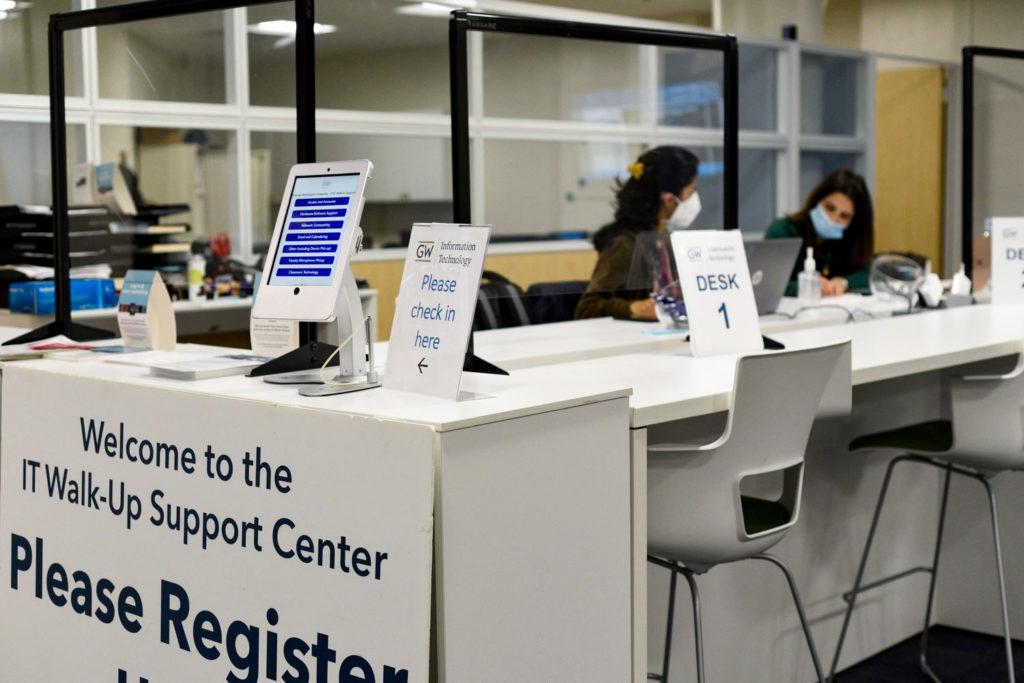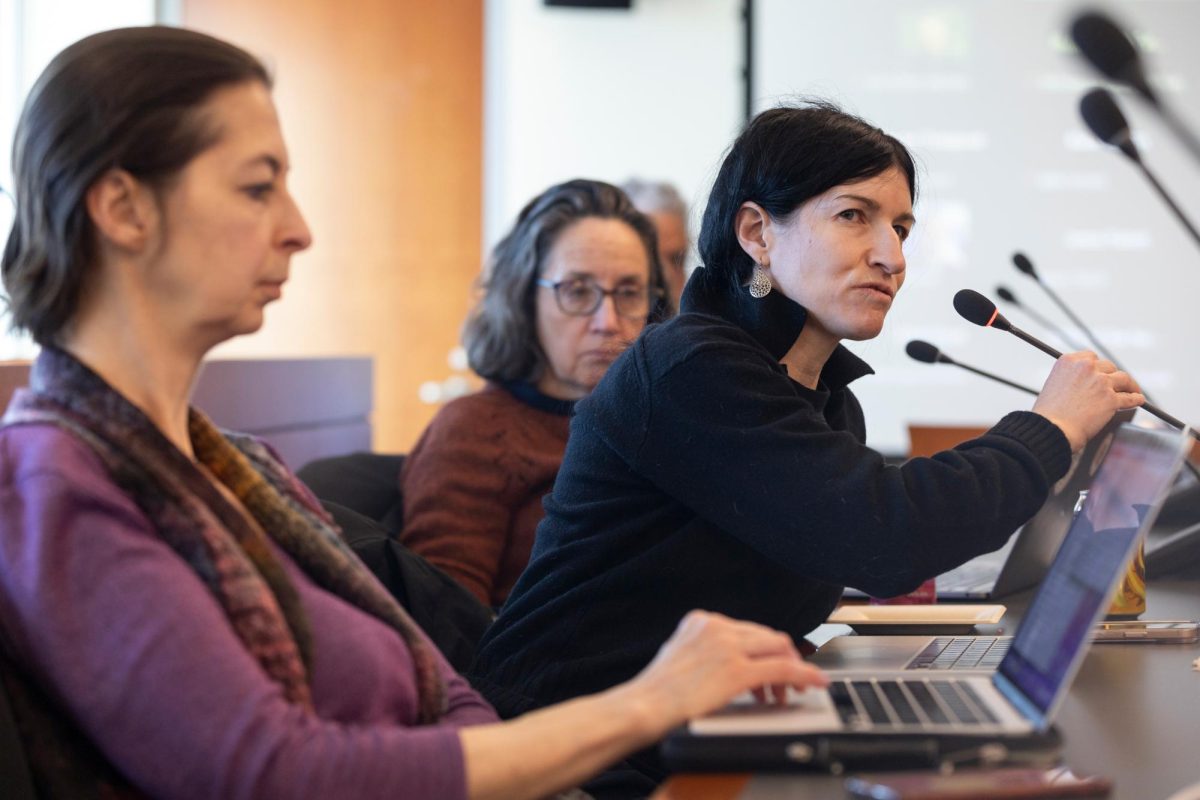Officials are continuing to update the University’s websites to a standardized format six years after its debut.
Administrators said the University’s marketing and creative services offices have partnered with GW schools, departments and offices to update their websites to use the content management software Drupal, a format with a more “modern” appearance. They said department staff are currently updating their websites at their own pace and once completed, the changes will allow officials to post more “dynamic” content on a platform that is easier to design and manage.
University spokeswoman Crystal Nosal said officials debuted the redesigned website format in 2013 with the new website of GW Today, the University’s official online publication, and began gradually updating other websites in 2014. She said officials completed their biggest website overhaul with an update to GW’s main website in 2016.
“Since 2012, our mobile traffic has doubled and habits of users have dramatically changed,” Nosal said in an email. “Our newer designs take that into account with a fully responsive framework and sites that encourage scrolling.”
The number of visitors to GW’s home page increased by 50 percent last year. About a third of users accessed the home page from a mobile device.
Nosal said a content strategist, project manager and designer at the University manage the new website format’s structure, user experience design, graphic design and overall strategy to implement the format.
She added that the marketing office works on 20 to 40 website redesign projects across different departments at GW at a time, from less complex sites that feature mostly text to more complex websites for schools that include hundreds of subpages and have “unique branding and graphic needs.”
“The evolution of GW’s web presence will never be complete, as the web is always evolving,” she said.
Nosal said the leaders of schools and departments set their own timelines for website redesigns “as resources allow,” so officials do not have a definite timeline for when all the University’s websites will conform to a single standard.
She said officials are not spending any additional funds on the upgrades because no additional employees have been brought on to help manage the research, optimization and training associated with the new website format.
Nosal added that faculty and staff in schools and departments across GW have “regularly” told administrators that users react positively to the website redesigns after making the switch.
“The biggest positive indicator has been schools and departments who have previously used systems outside of our central GW Drupal platform asking to move into GW Drupal,” she said.
Higher education experts said extensive changes typically require a long period of time to implement, adding that updates to academic websites are common to unify site design.
Curt Bonk, a professor in the instructional systems technology department at Indiana University Bloomington, said higher education administrators have continually upgraded their university’s websites since the launch and popularization of the Internet in the late 1980s and early 1990s.
“Primitive websites that existed in the 1990s and early 2000s have been modified and transformed for a number of reasons,” Bonk said.
He said program web designs that are easy to navigate allow students to easily obtain the information they want to know, which encourages their interest in the programs.
“It’s about advocating for the university or the department so that you can recruit students,” he said.
Natasha Jankowski, a research associate professor of education policy, organization and leadership at the University of Illinois at Urbana-Champaign, said updating all of a University’s websites can be a “time-consuming” process because the people who are responsible for updating the sites feel “a great deal of ownership” toward the website and want to make every change possible to ensure a perfect finished product.
She said the length of time to complete the process depends on how much feedback administrators collect and incorporate from community members on different website designs.
“You can turn it around pretty quick if you’re not going to need to build momentum or agreement around it,” Jankowski said.
She said officials may undertake website overhauls for two reasons: in coordination with the launch of a marketing campaign or because peer institutions are making changes to their websites.
Officials plan to launch a fundraising campaign in 2021 in conjunction with the University’s bicentennial celebration. Two of GW’s 12 peer schools’ main university and school websites follow a uniform format.
“We want to jump in and get it done so we don’t lose our sort of recruitment or competitive edge,” Jankowski said.








